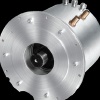Индустриален клъстер "Електромобили" - Учредители:








 |

|

|
| Актуално | За клъстера | Екип | Членове | Документи | Анализи | Услуги | Стани член | Награди | ССЕМ | Контакти |
ИКЕМ - Индустриален клъстер "Електромобили" | Четвъртък, 01.01.2026 | |
|
Automotive Technology: Greener Products, Changing Skills
1. Introduction In the past 30 years, the motor vehicle has undergone a remarkable evolution. Nowhere is that evolution more apparent than in the vehicle powertrain. Yet, it is possible that the next decade may see an even more drastic evolution, even revolution, in technology. This report will highlight the types of powertrain technology under development, and possible timelines for the technology options and the workforce skills needed to research, develop and manufacture these products. There is currently an enormous amount of excitement surrounding the electrification of the vehicle. During his election campaign, Barack Obama set a goal for the United States of one million plug-in electric vehicles (PEVs) on the road by 2010—a pledge he reconfirmed in the 2012 State of the Union speech. A review of general press reports might lead to the belief that PEV technology is going to be the dominant powertrain in the next five years. However, there are significant hurdles to the wide-scale penetration of PEVS, with cost being the most apparent. Numerous federal, state and local incentives have been developed to overcome the initial cost of PEVs; they are designed to reduce costs and increase public demand. Concomitantly, the incumbent powertrain technology—the spark ignited internal combustion engine—continues to evolve and improve. While it is likely that the trend toward vehicle electrification will continue, advanced powertrain technology options are many, though somewhat uncertain. This report will also seek to identify powertrain-related skills and skill gaps, as well as jobs: those undergoing evolutionary change and those that are truly transformational. It is important to put changes in powertrain technology into context. The charge for this report was to define the change and job skills for a five- to 10-year horizon. Implementation of technology in the automotive industry—even the post-bankruptcy industry—can be relatively slow. Change comes over product cycles, which can be four or more years. Multiply that by product portfolios, and a completely new powertrain paradigm could take decades. Further, in many ways, it is a net-zero game. For example, the increased penetration of electric drivetrains may come at the cost of engineering and manufacturing for internal combustion engines—a strength of the Indiana, Michigan and Ohio region.
1.1 Methodology
1.2 Advanced and Alternative Powertrain Technology In the automotive industry, uncertainty (in the market and/or in the policy arena) can be challenging, making these very uncertain times difficult for all manufacturers. The automotive industry has historically been somewhat risk averse. Given the enormous investment required for development and manufacture of its products, this is understandable. Yet, current market uncertainty makes almost all powertrain actions risky. Inactivity presents an equally risky strategy as does overinvestment in any one technology. The industry continues to develop new powertrain technology at a rapid rate; it is less certain how rapidly consumers will accept and embrace the new technologies. |
Продукти 
Комплектна система за задвижване на електромобилиСистемата за електрозадвижване обхваща гама с три основни типоразмера на ел. мощност със съответните компоненти - електромотор и контролер. oще ...Виж всички продуктиАнкета с продължение...
|
|
|
 ЕВРОПЕЙСКИ СЪЮЗ Европейски фонд за регионално развитие Инвестираме във вашето бъдеще |
 |
 ОПЕРАТИВНА ПРОГРАМА „Развитие на конкурентоспособността на българската икономика” 2007-2013 www.opcompetitiveness.bg |
|
Интернет страницата е създадена с финансовата подкрепа на ЕФРР, в рамките на проект „Развитие на Индустриален Клъстер Електромобили” по ДБФП К-02-2/28.09.2011 г. |
|||